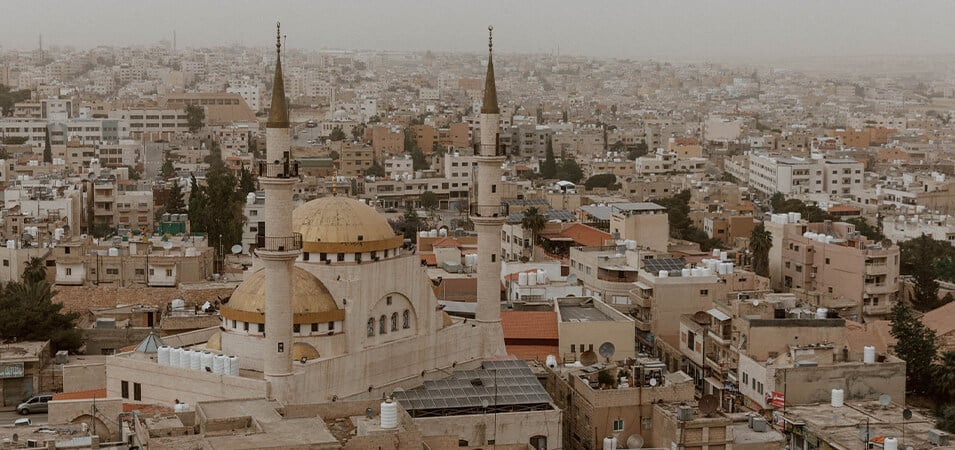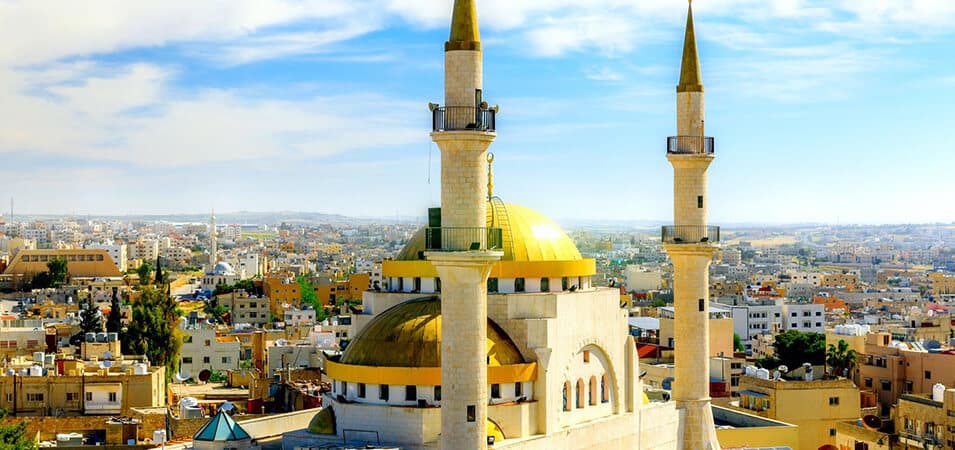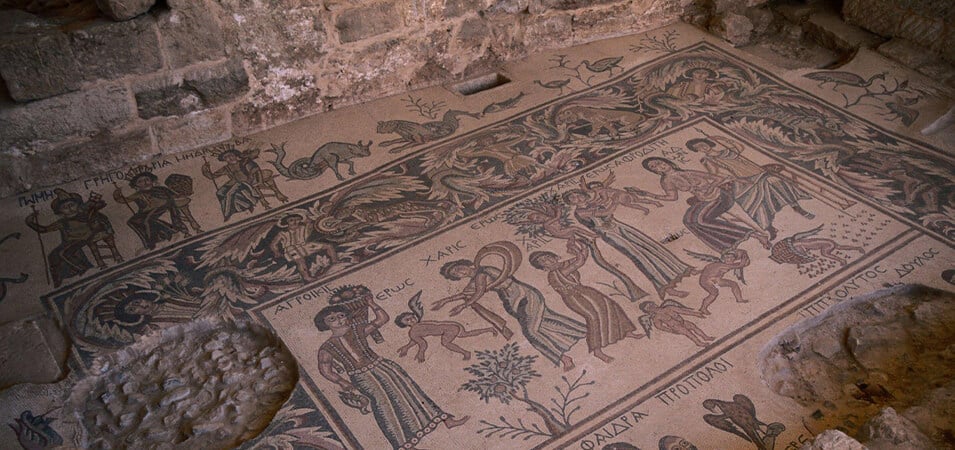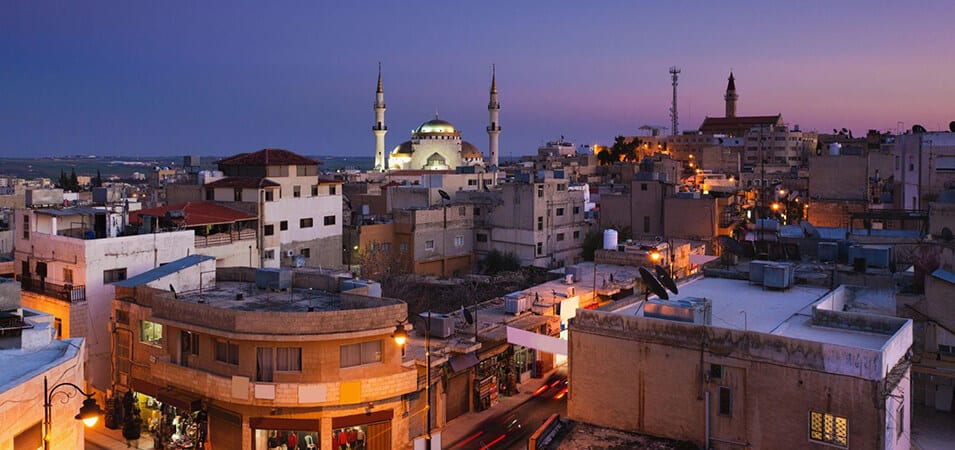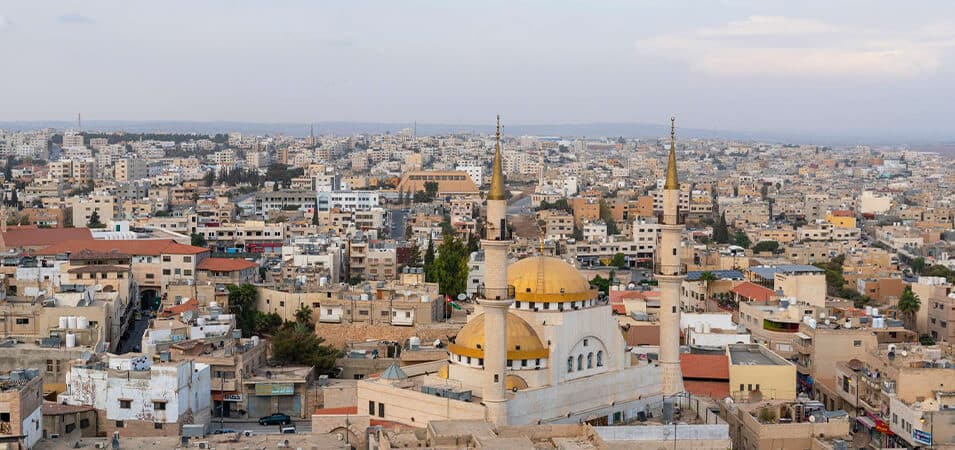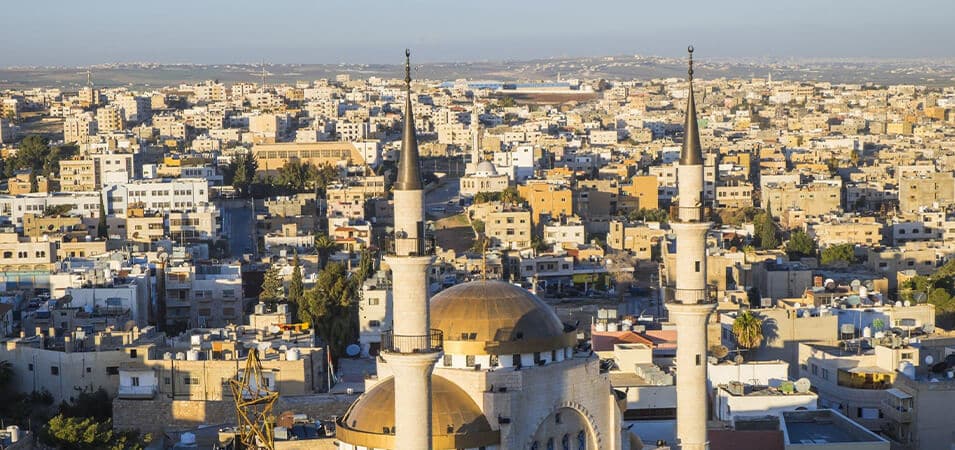Madaba, a captivating city in Jordan, offers a unique travel experience filled with history, culture, and breathtaking sights. Known as the “City of Mosaics,” Madaba holds centuries of secrets to explore. In this comprehensive Madaba travel guide, we will delve into the city’s highlights, provide practical tips, and unveil the hidden gems that make it a must-visit destination for travelers.
Don’t Miss checking out our Jordan Travel Packages.
Location of Madaba
In central Jordan, Madaba boasts a strategic position that has influenced its rich history and cultural heritage. Situated just 30 kilometers southwest of the capital, Amman, the city enjoys convenient accessibility. Nestled between rolling hills and fertile plains, Madaba’s geography offers a picturesque backdrop for exploration. The city’s moderate climate makes it an ideal year-round destination. Still, the best time to visit is spring (March to May) and autumn (September to November), when temperatures are pleasant and comfortable for outdoor activities.
The Historical Significance of Madaba
Madaba holds a profound historical significance that stretches back centuries. As one of the oldest inhabited cities in Jordan, it has witnessed the rise and fall of various civilizations throughout its storied past. Its ancient roots can be traced back to biblical times, with references in the Old Testament.
Madaba’s strategic location along ancient trade routes contributed to its importance as a cultural and commercial hub. It thrived during the Roman and Byzantine periods, leaving a wealth of archaeological treasures and architectural marvels.
The city’s most prominent feature is its intricate mosaic art. Madaba’s mastery in mosaic-making flourished during the Byzantine era, with exquisite mosaics adorning churches, homes, and public buildings. These remarkable artworks provide a glimpse into the daily lives, religious beliefs, and historical events of the time.
Madaba Mosaic Art
Madaba is known for its rich history and ancient mosaic art. The city has a long tradition of creating intricate mosaics that date back thousands of years.
One of Madaba’s most famous mosaic artworks is the Madaba Map, also known as the Madaba Mosaic Map. It is a Byzantine-era mosaic map of the Holy Land, preserved on the floor of the Greek Orthodox Church of St. George. Created in the 6th century, it depicts various cities, landscapes, and biblical sites from Egypt to Palestine. The map is considered an important archaeological and religious treasure, providing valuable insights into the geography and topography of the region during that time.
Apart from the Madaba Map, numerous other mosaic artworks are found throughout the city. Many private homes, public buildings, and churches in Madaba showcase beautifully crafted mosaic floors and walls. These mosaics often depict scenes from nature, biblical stories, and everyday life.
The mosaic art in Madaba is characterized by its vibrant colors, intricate details, and skilled craftsmanship. The mosaics are created using small pieces of colored stone, glass, or ceramic tiles called tesserae. The tesserae are meticulously arranged to form intricate patterns, images, and designs.
In recent years, Madaba has also become a center for contemporary mosaic art, attracting local and international artists who create modern interpretations of this ancient art form. Visitors to Madaba can explore various workshops and galleries where they can witness the creative process and even try their hand at making their mosaic artwork.
Top Attractions in Madaba in points
The Madaba Map
A must-see attraction in Madaba is the famous Madaba Map, a sixth-century mosaic map of the Holy Land. Located in the Greek Orthodox Church of St. George, the map depicts biblical sites and provides valuable insights into the region’s geography during that era.
Saint George’s Church
Visit the stunning Saint George’s Church, home to more than just the Madaba Map. This ancient church features an array of intricate mosaics, including depictions of saints, angels, and biblical scenes, showcasing the exceptional artistry of Madaba.
Madaba Archaeological Park
Step back in time at the Madaba Archaeological Park, where you can explore the remains of Roman and Byzantine buildings. Discover ancient villas, baths, and churches, uncovering the layers of history that have shaped the city.
The Church of the Apostles
Another important religious site in Madaba is the Church of the Apostles. Adorned with beautiful mosaics, this church offers a glimpse into the early Christian period and houses an impressive collection of artifacts.
Mount Nebo
Venture to Mount Nebo, a biblical landmark outside Madaba. According to tradition, it is the place where Moses viewed the Promised Land before his death. Enjoy panoramic views of the Jordan Valley and visit the Moses Memorial Church, which showcases more captivating mosaics.
Haret Jdoudna Mosque
Admire the architectural beauty of the Haret Jdoudna Mosque, a prominent mosque in Madaba. With its distinctive design and intricate detailing, the mosque is a testament to the city’s rich Islamic heritage.
The Shrine of the Beheading of John the Baptist
Pay homage to John the Baptist at the Shrine of the Beheading, located within the grounds of the Greek Orthodox Church of St. John the Baptist. This sacred site holds religious significance and is revered by Christians and Muslims.
These are just a few top attractions that await you in Madaba. Each site tells a unique story, immersing visitors in the city’s rich history, art, and spirituality. Explore these remarkable destinations to experience the essence of Madaba truly.
Cultural Experiences in Madaba
With its rich cultural heritage, Madaba offers many experiences that immerse visitors in the vibrant tapestry of the city’s traditions and customs. Here are some cultural experiences to enjoy in Madaba:
Handicrafts and Traditional Workshops: Explore the city’s bustling artisan workshops and discover the beauty of Madaba’s handicrafts. From intricate mosaics to handwoven textiles, talented artisans showcase their skills, allowing you to witness the creation of exquisite traditional crafts firsthand.
Local Festivals and Events: Immerse yourself in the lively atmosphere of Madaba’s festivals and events. From the vibrant Madaba Carnival to the cultural celebrations during religious holidays, such as Easter and Christmas, these festivities glimpse the city’s traditions, music, dance, and culinary delights.
Exploring the Local Cuisine and Culinary Delights: Indulge in the flavors of authentic Jordanian cuisine as you explore Madaba’s local food scene. From hearty traditional dishes like Mansaf (a lamb and rice dish) to delectable sweets like knafeh (a cheese pastry soaked in sweet syrup), Madaba offers a culinary journey filled with unique flavors and aromas.
Traditional Music and Dance Performances: Experience traditional Jordanian music’s enchanting sounds and rhythms and witness captivating dance performances. Local musicians and dancers showcase their talents, creating an immersive cultural experience that transports you to the heart of Jordan’s musical heritage.
Visiting Cultural Centers and Museums: Delve into the city’s history and culture by visiting cultural centers and museums. The Madaba Museum provides insights into the city’s past. At the same time, the Madaba Institute for Mosaic Art and Restoration offers educational programs and exhibitions that shed light on the art of mosaic-making.
The Best Things To Do in Jordan
Madaba offers a diverse range of activities that cater to various interests and preferences. Whether you’re an adventure seeker, a nature lover, or a history enthusiast, there’s something for everyone in this captivating city. Here are some activities to enjoy:
- Madaba has several wetland areas, providing an ideal habitat for various bird species. Grab your binoculars and head to sites like the Mujib Nature Reserve or King Talal Dam to spot rare and migratory birds in their natural surroundings.
- Rent a bicycle and embark on a cycling adventure through the streets of Madaba and its surrounding countryside. Pedal your way through olive groves, vineyards, and ancient ruins, enjoying the scenic landscapes while experiencing the local culture up close.
- Delve into the city’s rich history by visiting archaeological sites, ancient ruins, and well-preserved landmarks. Explore the Madaba Archaeological Park, wander the streets to discover hidden treasures, and marvel at the intricate mosaics in churches and archaeological sites.
- Engage your taste buds and participate in cooking classes or food tours that teach you about traditional Jordanian cuisine. Sample local delicacies, participate in olive oil tastings, and gain insights into Jordanian cuisine’s unique flavors and ingredients.
- Explore Madaba’s vibrant souks and markets, where you can find many traditional handicrafts, including intricate mosaics, handwoven textiles, and ceramics. Support local artisans and bring home unique souvenirs that reflect the city’s artistic heritage.
Best time to visit Madaba
The best time to visit Madaba is during the spring (March to May) and autumn (September to November) seasons. These periods offer pleasant weather, with temperatures ranging from 15°C to 25°C (59°F to 77°F). Spring brings beautiful blossoms and is ideal for outdoor activities, while autumn offers comfortable temperatures for exploring the city’s attractions. Additionally, visiting during these seasons allows you to avoid the peak summer crowds and enjoy a more relaxed experience. Whether you’re interested in historical sites, cultural experiences, or outdoor adventures, planning your trip to Madaba during spring or autumn ensures an enjoyable and memorable visit.
Don’t Miss to Check out our Related Article :

